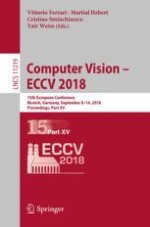2018 | OriginalPaper | Chapter
Rethinking Spatiotemporal Feature Learning: Speed-Accuracy Trade-offs in Video Classification
Authors : Saining Xie, Chen Sun, Jonathan Huang, Zhuowen Tu, Kevin Murphy
Published in: Computer Vision – ECCV 2018
Publisher: Springer International Publishing
Activate our intelligent search to find suitable subject content or patents.
Select sections of text to find matching patents with Artificial Intelligence. powered by
Select sections of text to find additional relevant content using AI-assisted search. powered by
